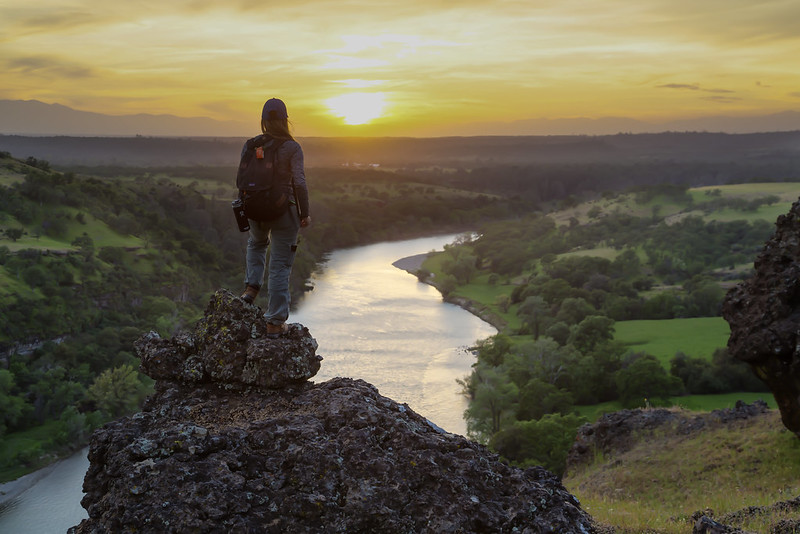WASHINGTON, DC (Thursday, September 12, 2024) — Today, the Foundation for America’s Public Lands, the official Congressionally-chartered charitable partner of the Bureau of Land Management (BLM), launched the Drought Resilience Fund, a first-of-its-kind grant program to power locally led partnerships with the BLM to combat the severe drought challenges facing public lands and Western communities. The Fund will invest an initial $2.4 million in two inaugural projects in the Colorado River Basin.
“The Colorado River is an essential lifeline that millions of people rely on every day. As the West faces a worsening water crisis, communities are stepping up and leading meaningful work to curb the harmful impacts of drought on public land and their livelihoods. The Foundation’s new Drought Resilience Fund will invest in the work of partners on the ground who have deep knowledge of the land,” said I Ling Thompson, CEO of the Foundation for America’s Public Lands. “By investing in projects that are led by local community-based stewards, the Foundation will help drive economic vitality in rural communities and foster long-term, lasting stewardship of public lands and waters.”
Nearly 40 million Americans depend on the Colorado River to support their livelihoods. However, worsening drought in the West is a persistent challenge that poses an existential threat to communities, landscapes, and economic vitality. While communities and partners across the American West are leading impactful efforts to implement water conservation measures and drought-resistant practices, additional resources are urgently needed to bolster long-term resilience.
The Drought Resilience Fund marks the Foundation’s first grantmaking endeavor as it charts its inaugural programs and priorities. Through strategic investments in locally led partnerships, the Fund will support projects that are building lasting solutions to overcome the challenges of drought on BLM-managed lands and waters. The Fund leverages investments from the Inflation Reduction Act and private philanthropic contributions.
At the outset, the Foundation will award nearly $2.4 million across two inaugural projects in the Colorado River Basin, one in the Upper Basin and one in the Lower Basin:
Expanding Virtual Fencing for Livestock Grazing on Public Lands – Colorado
The Eagle County Conservation District will receive $994,437 over three years to expand virtual fencing for cattle grazing on BLM lands in Colorado. Virtual fencing — which BLM has pioneered on public lands — is a powerful tool to improve rangeland health and drought resilience using rancher-led innovation and technology to set boundaries on grazing areas instead of physical fences, which are challenging to maintain. By keeping livestock contained to specific areas, virtual fences provide real-time data on the location of cattle and support active, rotational grazing to help prevent soil erosion. Virtual fencing also supports range restoration activities that improve rangeland health and drought resilience outcomes. This technology also supports the mixed use of public lands by keeping cattle away from recreational areas, sensitive archeological sites, and restoration projects. In its first year, the project will:
- Expand range restoration activities on ground covered by virtual fencing, combined with monitoring of range health, to track anticipated improvements in water and soil quality.
- Introduce virtual fencing and rotational grazing to Bocco Mountain in Northwest Colorado, which has not been utilized by cattle in more than 30 years due to lack of fencing infrastructure.
- Provide staff and equipment to scale the project to include more ranchers and BLM grazing lessees.
Building Drought Resilience in the San Pedro Riparian National Conservation Area– Arizona
The City of Sierra Vista, the Friends of the San Pedro River, and the Borderland Restoration Network — groups that have been long-standing partners of the BLM — will receive $1,500,000 over three years to invest in the restoration of the BLM’s San Pedro Riparian National Conservation Area. One of the most important riverscapes in the country, this region provides drinking water to Southwestern communities, bolsters national security through facilitating operations at the Army facility Fort Huachuca, supports the outdoor recreation economy, and provides vital habitat to hundreds of unique wildlife species. In its first year, the project will:
- Deploy restoration practices along the San Pedro River to decrease erosion, bolster habitat, and improve resilience to drought conditions.
- Improve visitor center infrastructure and renewable energy production and storage at the San Pedro House to support the growing recreation economy.
- Support the groundwater recharge network to ensure communities and Fort Huachuca have access to reliable drinking water, while also supporting flows in the San Pedro River.
- Support youth crews doing restoration and monitoring on San Pedro tributaries and the river.
“With support from the Foundation, the City of Sierra Vista looks forward to expanding the partner collaboration around the groundwater recharge network that helps provide the City with a reliable water supply while also supporting San Pedro River flows,” said Clea McCaa, Mayor of the City of Sierra Vista.
“Public visitation to the San Pedro Riparian National Conservation area is growing yearly. The visitor services provided by the Friends of the San Pedro River operate in a remote area that is primarily off the power grid. These funds will be used to modernize the currently antiquated solar power system that is no longer reliable. This will provide a modernized solution to our energy requirements that does not rely on fossil fuels,” said Ron Stewart, President of the Friends of the San Pedro River.
“With generous support from the Foundation, we are implementing multi-faceted restoration strategies to enhance the ecological function and drought resilience of the San Pedro tributaries, while engaging local youth to gain practical experience alongside our team,” said Sarah Colombo, Watershed Restoration Program Director of the Borderlands Restoration Network.
“We are thrilled about this opportunity,” said Colleen Dingman, Field Manager with the BLM Tucson Field Office. “The Foundation’s funding award will strengthen our partnerships to enhance the resilience of BLM-managed public lands and waters to drought in the San Pedro River basin.”
“With support from the Foundation, Eagle County Conservation District looks forward to expanding our partnership with Eagle County ranchers and the BLM to deploy the technological innovation of ‘virtual fence’ at the rangeland scale,” said Laura Bohannon, Executive Director of Eagle County Conservation District. “We will continue to learn and demonstrate its ability to support range stewardship and enhance the drought resilience of our rangelands through collaboration, sustainable grazing management practices, restoration work, research, education and outreach.”
“The outcome from virtual fence and all the GPS location data you get on your cows is only as good as your operator and the team supporting the effort,” said Pat Luark of the Luark family, owners and managers of Reverse JL Bar Cattle Company. “That said, the folks supporting our family’s efforts have been phenomenal and the results speak for themselves: We were able to have 150 cows out on our BLM grazing ground in winter because we had so much growth and ground coverage at a time when hay was going for $300/ton—that’s a real benefit.”
Later this year, the Foundation will announce additional funded projects, and opportunities to apply for funding in 2025.
About the Foundation:
As the official charitable partner of the Bureau of Land Management (BLM), the Foundation for America’s Public Lands serves as a convener, partner, and fundraising catalyst to help ensure the health and sustainability of America’s public lands and waters today, and for the future.
Founded in 2022, the Foundation works hand-in-hand with the BLM, local communities, and partners to increase support for public lands and waters and inspire more people to connect with the outdoors. Each unique and truly special scenic river, wilderness area, monument, historic trail, conservation area, and working land holds a story of its own.
To learn more about the Foundation for America’s Public Lands, visit americaslands.org.




